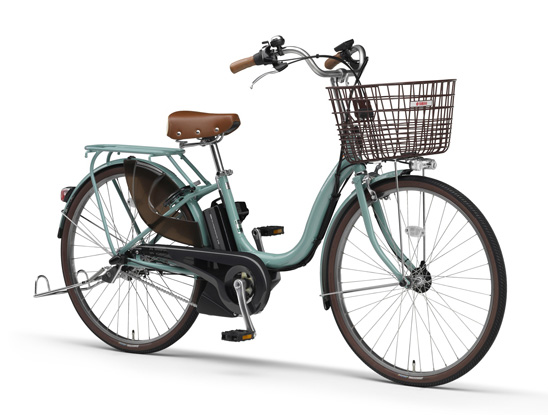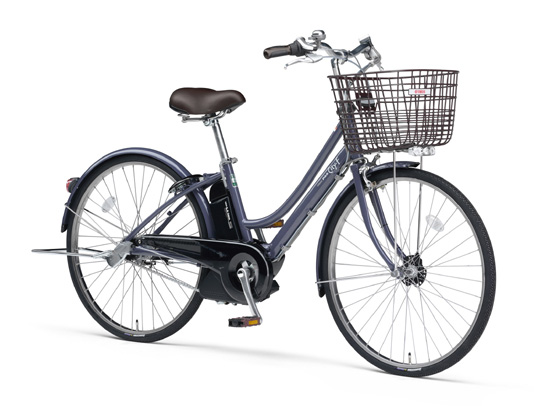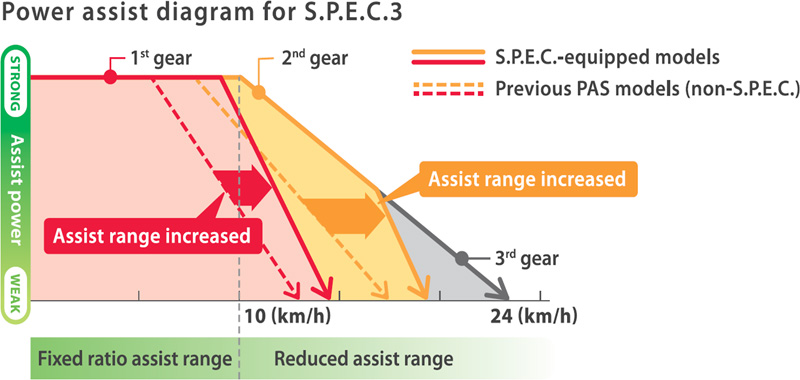The “GREEN CORE” Ideal: An Accumulation of Yamaha Know-how and Success
介绍雅马哈发动机技术背后的故事。

自 1993 年推出第一代 Yamaha PAS 自行车以来,Yamaha 已为日本和海外品牌制造和供应了超过 300 万台(截至 2014 年)作为电动助力自行车心脏的驱动单元。在日本,这些驱动单元用于完整的 Yamaha 品牌 PAS 自行车,但它们也以原始设备制造商的形式供应给国内外的制造商。作为这些驱动单元核心的电动机经历了不断的发展,以提高其基本性能并减小尺寸和重量。虽然第一代装置的重量约为 6 公斤,但今天最新的驱动装置重量不到 4 公斤。同时,提升机组用电“质量”一直是我们关注的重点之一。
第一代 PAS 自行车使用可靠的刷式直流电机,直到 1999 年推出的 PAS Royal 采用交流伺服电机,使助力感觉更顺畅。
然后在 2001 年,带有使用钕磁铁的小型电机的型号加入了 PAS 阵容。该电机为辅助力提供了更平滑、更线性的感觉。
此外,在 2014 年,雅马哈基于多年积累的技术和诀窍,为紧凑型下一代驱动单元引入了“GREEN CORE”概念。该概念的目的是创造驱动装置,通过更紧凑、更轻的重量和更高的性能,提供愉快的乘坐体验和出色的环保性。 2015 年 1 月发布的 PAS Natura 型号(#1)是首批采用基于 GREEN CORE 的驱动单元的产品。与之前的版本相比,驱动单元缩小了约 16%,重量减轻了约 20%。它还实现了相同水平的扭矩输出,使用更少的稀土金属等,从而减少了环境足迹。这个新的驱动单元随后被用于其他 PAS 模型。
Non-Contact Magnetostrictive Torque Sensor for a More Enjoyable Ride
Yamaha based its approach to drive unit development on the principle of detecting the force applied by the rider to the pedals as “torque.” Using a torque sensor to detect the force applied to the pedals and a speed sensor to monitor the bicycle’s running speed, the system’s microcomputer calculates optimum assist values in real-time and sends commands to the controller unit to regulate the amount of assist force to be sent to the rear wheel.
The torque sensor used on the first-generation PAS models was a mechanical type, which meant that there was a certain level of resistance on the pedals when trying to pedal without an assist, such as when the system was turned off. To resolve this issue, a non-contact torque sensor utilizing magnetostrictive materials was adopted. The new sensor was first put to use on the “New PAS” models released from April 2003 (#2), and it reduced loss and resistance in the drive unit to give the easy pedaling feeling of a regular bicycle when the assist mode was not in use.
It was with the models released in 2013 (#3) that a new level of smoothness was achieved for the power assist. In addition to the existing torque and speed sensors, a third crank sensor that detects the rotational speed of the crank (pedals) was added to create a “Triple Sensor System.” With this, the system could detect when the rider was pedaling fast as well as when the rider suddenly stopped pedaling. Input from the Triple Sensor System enabled real-time detection of how the rider was pedaling and how the bicycle was being ridden, enabling the drive unit to select a control map based on ride conditions to provide an optimal power assist from the motor. The rest of the PAS lineup was eventually equipped with this Triple Sensor System.
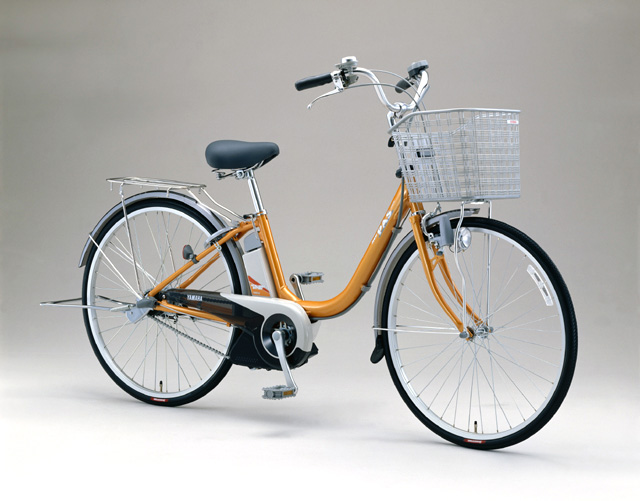
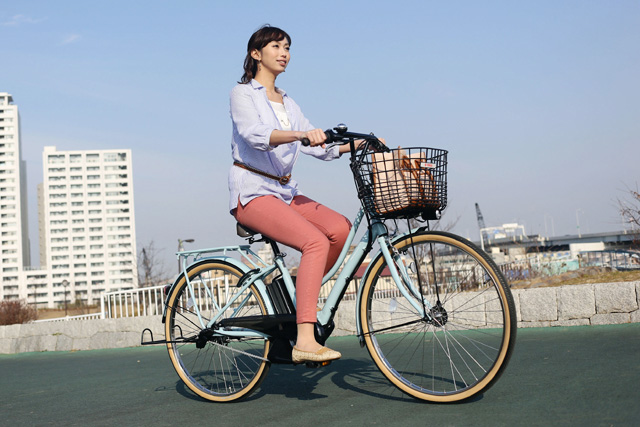
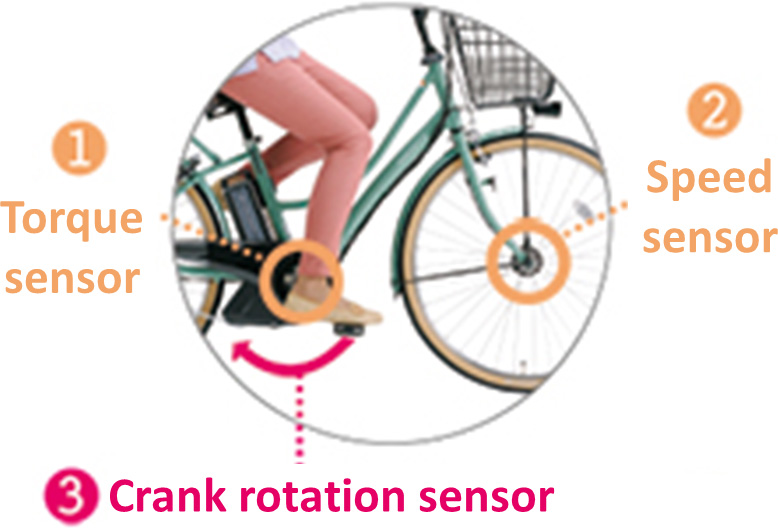
S.P.E.C. for Dedicated Control Parameters for Each Gear
The available mode settings for the power assist are a major factor contributing to the ease of use customers experience with Yamaha PAS bicycles. In 1998, we introduced models featuring two ride modes: Standard and a new Economy Mode. Then in 2006, we added an “Auto-Eco Mode” that brought both a strong assist when desired and longer assisted riding distance per battery charge for a choice of three ride modes. The assist would usually be activated when the rider is pushing hard on the pedals at times like setting off from a stop or when accelerating, but when the force to the pedals lessened, the system would then automatically and smoothly turn the assist off or on again. This contributed to longer assisted riding distances per charge in accordance with riding conditions.
The next evolution in assist control came in 2008. In the previous control system, the control parameters for assist force (motor rpm) were set for running in the top gear, but this alone failed to provide effective assist performance for some types of riding styles. For example, in the case of a 3-speed model, this setting meant that when the rider downshifted from 3rd to 2nd gear, the control system would decrease the strength of the assist because of the increase in motor rpm even though the bicycle’s speed was decreasing. To make optimum use of the assist potential over the range of gear ratios, we developed the “S.P.E.C.” (Shift Position Electric Control) system to provide dedicated assist control parameters for each gear. This system was adopted first on a PAS sport model before subsequent implementation on other models.
After the government regulation for assist ratio (human power to assist power) was raised from 1:1 to 1:2 from 2009, various PAS models were fitted with the new “S.P.E.C.3” system (#4) that enabled a stronger assist at low speeds, thus taking full advantage of the new regulation. These systems made it possible to provide smooth and powerful assist performance over a wider range of gears and speeds, from starting off, acceleration and up through cruising speeds.
